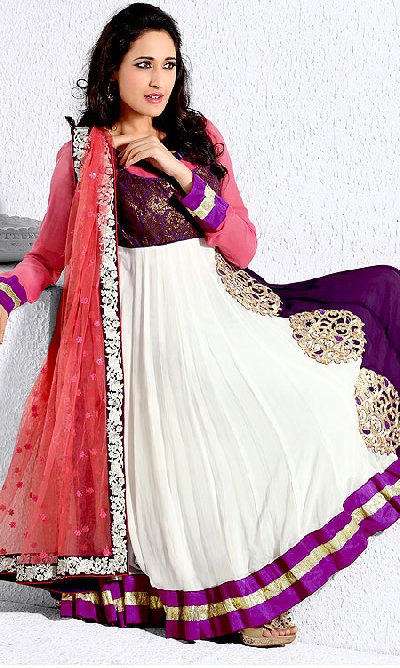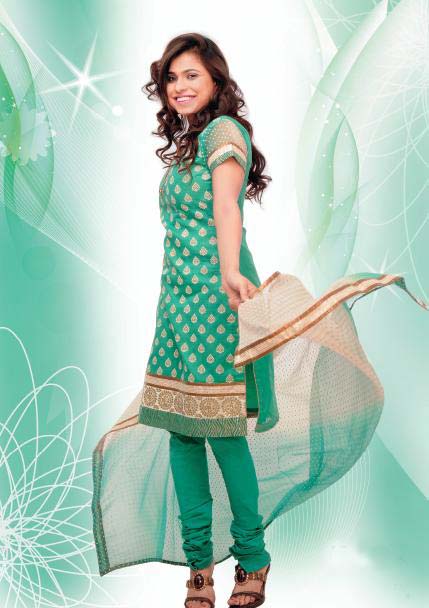dress salwar kameez for girls Biogarphy
Source(google.com.pk)The kameez is a long shirt or tunic. The side seams (known as the chaak) are left open below the navel, which gives the wearer greater freedom of movement. The kameez is usually cut straight and flat; older kameez use traditional cuts, as shown in the illustration; modern kameez are more likely to have European-inspired set-in sleeves. The tailor's taste and skill are usually displayed not in the overall cut, but in the shape of the neckline and the decoration of the kameez.
When women wear the salwar kameez, they usually wear a long scarf or shawl called a dupatta around the head or neck. For Muslim women, the dupatta is a less stringent alternative to the chador or burqa (see hijab). For Hindu women (especially those from northern India, where the salwar kameez is most popular), the dupatta is useful when the head must be covered, as in a temple or the presence of elders. For other women, the dupatta is simply a stylish accessory that can be worn over one shoulder or draped around the chest and over both shoulders.
The pants, or salwar, are known as salwar in Punjabi: , salwaar or shalwaar in Gujarati, and shalwar in Urdu: شلوار قمیض. The word comes from the Persian: شلوار, meaning pants. The shirt, kameez or qamiz, takes its name from the Arabic qamis. There are two main hypotheses regarding the origin of the word, namely:
that Arabic qamis is derived from the Latin camisia (shirt), which in its turn comes from the Proto-Indo-European kem (‘cloak’). [1]that Mediaeval Latin camisia is a borrowing through Late Classical Greek kamision from the Central Semitic root “qmṣ”, represented by Ugaritic qmṣ (‘garment’) and Arabic qamīṣ (‘shirt’). Both of these are related to the Hebrew verb קמץ qmṣ (‘grip’, ‘enclose with one’s hand’). [2]
The outfit is believed to originate with the Turkic-Iranian horse riding steppe peoples of Central Asia. A number of these tribes converted to Islam. Starting in the 12th century, a series of raids and invasions established Islamic Turkic-Iranian rule -- the Delhi sultanate and later the Moghul empire -- over much of what is now northern India and Pakistan. Fashion followed rule, and the salwar suit become popular throughout the area.
It now has no association with Islam, being worn by women of many religions. However, the dupatta, or veil, worn by many women as an accessory, can be used both as a form of Islamic head covering, as hijab, and as a religious requirement by Hindu women, who cover their heads in temples and in the presence of elders.
dress salwar kameez for girls Photos Pictures Pics Images

dress salwar kameez for girls Photos Pictures Pics Images

dress salwar kameez for girls Photos Pictures Pics Images

dress salwar kameez for girls Photos Pictures Pics Images

dress salwar kameez for girls Photos Pictures Pics Images

dress salwar kameez for girls Photos Pictures Pics Images

dress salwar kameez for girls Photos Pictures Pics Images

dress salwar kameez for girls Photos Pictures Pics Images

dress salwar kameez for girls Photos Pictures Pics Images
No comments:
Post a Comment